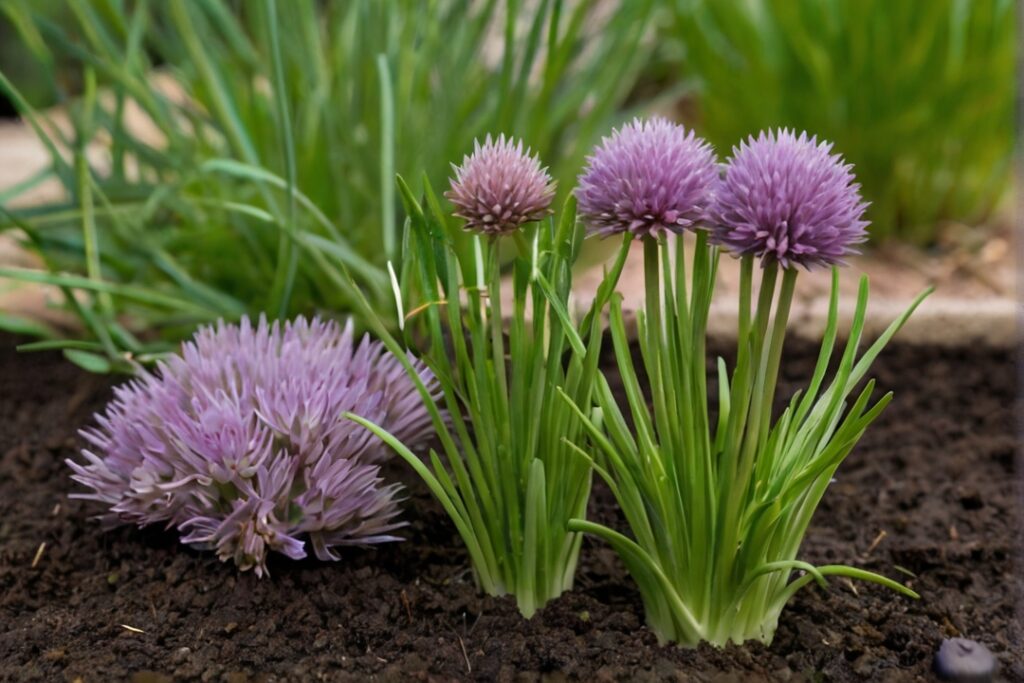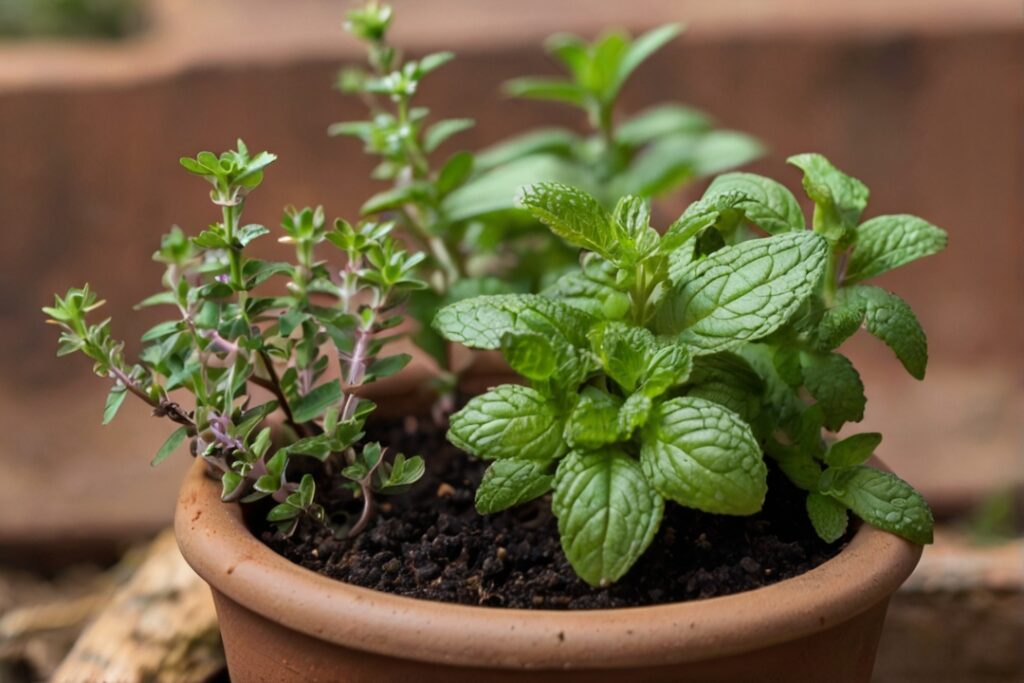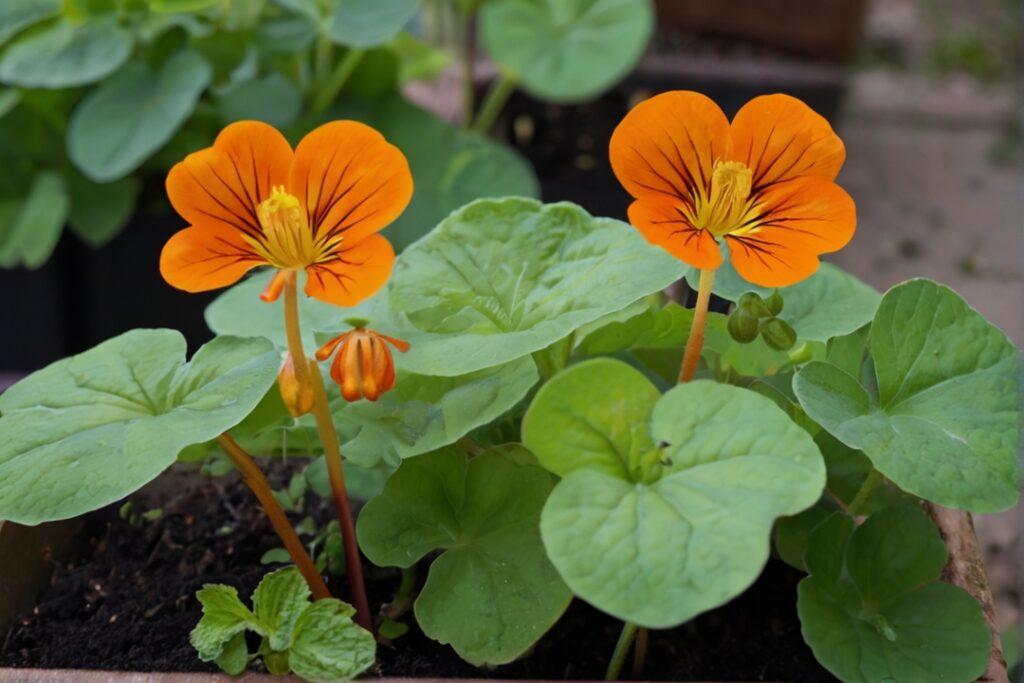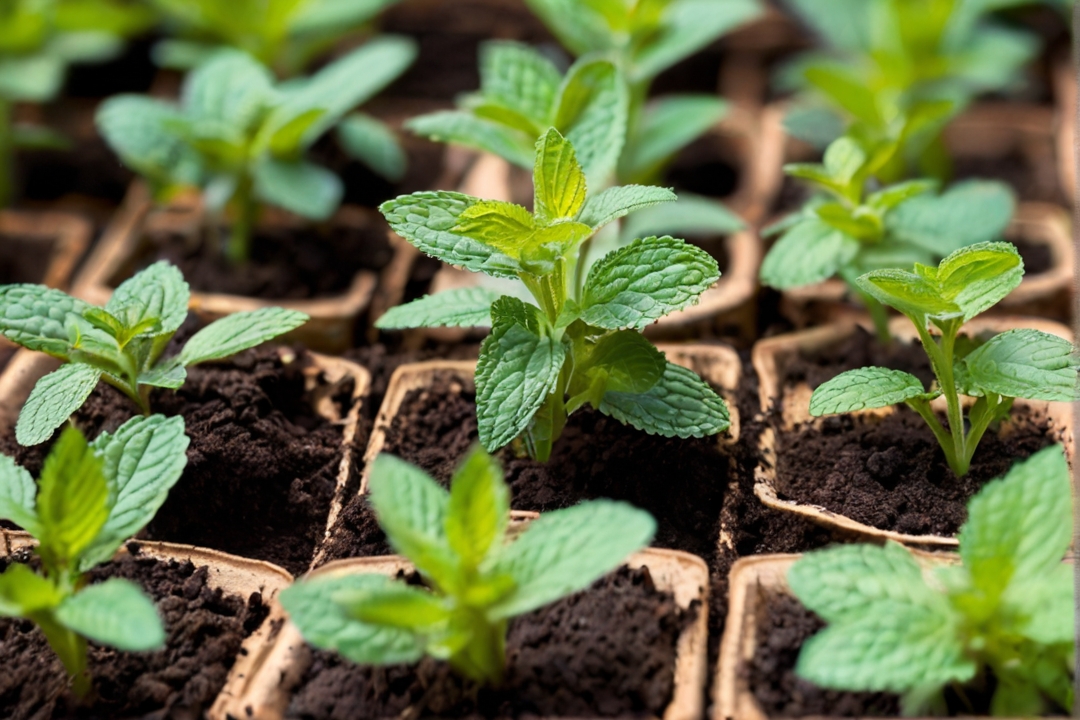Mint is a versatile herb that can be used in a variety of culinary dishes, teas, and even as a natural remedy for various ailments. It is known for its ability to aid digestion, soothe headaches, and relieve stress. By growing mint companion plants, you can not only enhance the growth and health of your mint plants but also enjoy the added benefits of these companion plants.
Table of Contents
The Benefits of Growing Mint Companion Plants
1. Improved soil health: Mint has a tendency to spread rapidly and can deplete the nutrients in the soil. By planting companion plants alongside mint, you can help improve the soil health by adding organic matter and increasing nutrient availability. For example, plants like basil and chives have deep root systems that can help break up compacted soil and improve drainage.
2. Pest control: Mint is susceptible to certain pests like aphids, spider mites, and flea beetles. However, by growing certain companion plants like marigolds and nasturtiums, you can naturally repel these pests and reduce the need for chemical pesticides. Marigolds emit a strong scent that repels many common garden pests, while nasturtiums attract beneficial insects like ladybugs and lacewings that feed on aphids.
3. Increased yield: Companion planting can also help increase the yield of your mint plants. Certain plants, like thyme, have similar growth habits and nutrient requirements as mint, which means they can compete for resources and limit the growth of weeds. This allows your mint plants to receive more sunlight, water, and nutrients, resulting in healthier and more productive plants.
4. Enhanced flavor and aroma of mint: Some companion plants can actually enhance the flavor and aroma of mint. For example, planting basil alongside mint can result in a unique blend of flavors that can be used in a variety of dishes. The aromatic oils released by the basil can infuse the mint leaves, creating a more complex and flavorful herb.
Choosing the Right Companion Plants for Mint
When choosing companion plants for mint, there are several factors to consider. First, you want to choose plants that complement mint’s growth habits and nutrient requirements. This means selecting plants that have similar soil and water needs, as well as plants that won’t compete too heavily for resources.
Second, you want to choose plants that repel pests and attract beneficial insects. Mint is susceptible to certain pests like aphids and spider mites, so planting companion plants that naturally repel these pests can help protect your mint plants. Additionally, planting flowers that attract beneficial insects like ladybugs and lacewings can help control pest populations and promote a healthy garden ecosystem.
Lastly, you may also want to consider the aesthetic appeal of your companion plants. Choose plants that have contrasting colors or textures to create an attractive and visually appealing garden bed.
5 Best Companion Plants for Mint
Basil
Basil is one of the best companion plants for mint due to its similar growth habits and nutrient requirements. Both basil and mint prefer well-drained soil and full sun, making them ideal companions in the garden. Additionally, planting basil alongside mint can enhance the flavor and aroma of both herbs.
To plant basil, choose a sunny location in your garden with well-drained soil. Plant the basil seedlings or seeds about 12 inches apart to allow for proper air circulation and prevent overcrowding. Basil requires regular watering to keep the soil evenly moist but not waterlogged. Fertilize the basil plants every 4-6 weeks with a balanced organic fertilizer.
To harvest basil, pinch off the leaves as needed, starting from the top of the plant. This will encourage bushier growth and prevent the plant from flowering too early. Basil leaves can be used fresh in a variety of dishes, or they can be dried or frozen for later use.
Chives

Chives are another excellent companion plant for mint. They have similar growth habits and nutrient requirements, making them compatible companions in the garden. Chives also have a natural ability to repel pests like aphids and spider mites, which can help protect your mint plants.
To plant chives, choose a sunny location with well-drained soil. Plant the chive seedlings or seeds about 6 inches apart, as they will spread and form clumps over time. Chives require regular watering to keep the soil evenly moist. Fertilize the chive plants every 4-6 weeks with a balanced organic fertilizer.
To harvest chives, snip off the leaves as needed, leaving about 2 inches of growth at the base of the plant. This will allow the chives to continue growing and producing new leaves. Chives can be used fresh in salads, soups, and other dishes, or they can be dried or frozen for later use.
Thyme

Thyme is an excellent companion plant for mint due to its similar growth habits and nutrient requirements. Both thyme and mint prefer well-drained soil and full sun, making them compatible companions in the garden. Thyme also has natural pest-repellent properties that can help protect your mint plants.
To plant thyme, choose a sunny location with well-drained soil. Plant thyme seedlings or small plants about 12 inches apart to allow for proper air circulation and prevent overcrowding. Thyme requires regular watering to keep the soil evenly moist but not waterlogged. Fertilize the thyme plants every 4-6 weeks with a balanced organic fertilizer.
To harvest thyme, snip off the stems as needed, leaving about 2 inches of growth at the base of the plant. This will allow the thyme to continue growing and producing new stems. Thyme can be used fresh or dried in a variety of dishes, including soups, stews, and roasted meats.
Marigolds
Marigolds are one of the best companion plants for mint due to their natural pest-repellent properties. Marigolds emit a strong scent that repels many common garden pests, including aphids, spider mites, and flea beetles. Planting marigolds alongside mint can help protect your mint plants from these pests.
To plant marigolds, choose a sunny location with well-drained soil. Plant marigold seedlings or small plants about 6-12 inches apart, depending on the variety. Marigolds require regular watering to keep the soil evenly moist. Fertilize the marigold plants every 4-6 weeks with a balanced organic fertilizer.
To use marigolds as a natural pest repellent, plant them in between your mint plants or around the perimeter of your garden bed. The strong scent of marigolds will help deter pests from approaching your mint plants. Additionally, you can also use marigold flowers as a natural dye or in culinary dishes.
Nasturtiums

Nasturtiums are another excellent companion plant for mint due to their natural pest-repellent properties and edible flowers. Nasturtiums attract beneficial insects like ladybugs and lacewings, which feed on aphids and other common garden pests. Planting nasturtiums alongside mint can help control pest populations and promote a healthy garden ecosystem.
To plant nasturtiums, choose a sunny location with well-drained soil. Plant nasturtium seeds or seedlings about 12 inches apart, as they will spread and form a dense ground cover. Nasturtiums require regular watering to keep the soil evenly moist. Fertilize the nasturtium plants every 4-6 weeks with a balanced organic fertilizer.
To use nasturtiums as a natural pest repellent, plant them in between your mint plants or around the perimeter of your garden bed. The bright flowers of nasturtiums will attract beneficial insects that feed on aphids and other pests. Additionally, you can also use nasturtium flowers and leaves in salads, sandwiches, and other culinary dishes.
How to Plant and Care for Mint Companion Plants
When planting mint companion plants, it’s important to consider their specific needs and requirements. Here are some tips for planting and caring for mint companion plants:
1. Choose a suitable location: Most companion plants for mint prefer full sun and well-drained soil. Choose a location in your garden that receives at least 6-8 hours of direct sunlight per day and has good drainage.
2. Prepare the soil: Before planting your companion plants, prepare the soil by removing any weeds or debris. Loosen the soil with a garden fork or tiller to improve drainage and aeration.
3. Planting distance: Space your companion plants according to their specific growth habits and requirements. Some plants may need more space to spread out, while others can be planted closer together.
4. Watering and fertilizing: Water your companion plants regularly to keep the soil evenly moist but not waterlogged. Avoid overwatering, as this can lead to root rot and other problems. Fertilize your plants every 4-6 weeks with a balanced organic fertilizer to provide them with the necessary nutrients.
5. Pruning and harvesting: Regularly prune your companion plants to promote bushier growth and prevent overcrowding. Harvest the leaves or flowers as needed, following the specific guidelines for each plant.
Growing Mint Companion Plants for a Thriving Garden
In conclusion, growing mint companion plants can have numerous benefits for your garden. By choosing the right companion plants, you can improve soil health, control pests, increase yield, and enhance the flavor and aroma of your mint plants. Basil, chives, thyme, marigolds, and nasturtiums are all excellent companion plants for mint that can help promote a thriving garden.
Companion planting is not only beneficial for your plants but also for the overall health and sustainability of your garden. By creating a diverse ecosystem with a variety of plants, you can attract beneficial insects, improve soil fertility, and reduce the need for chemical pesticides.
So why not give companion planting a try in your own garden? Plant some mint companion plants and watch as your garden flourishes with vibrant colors, delicious flavors, and healthy plants. Happy gardening!

